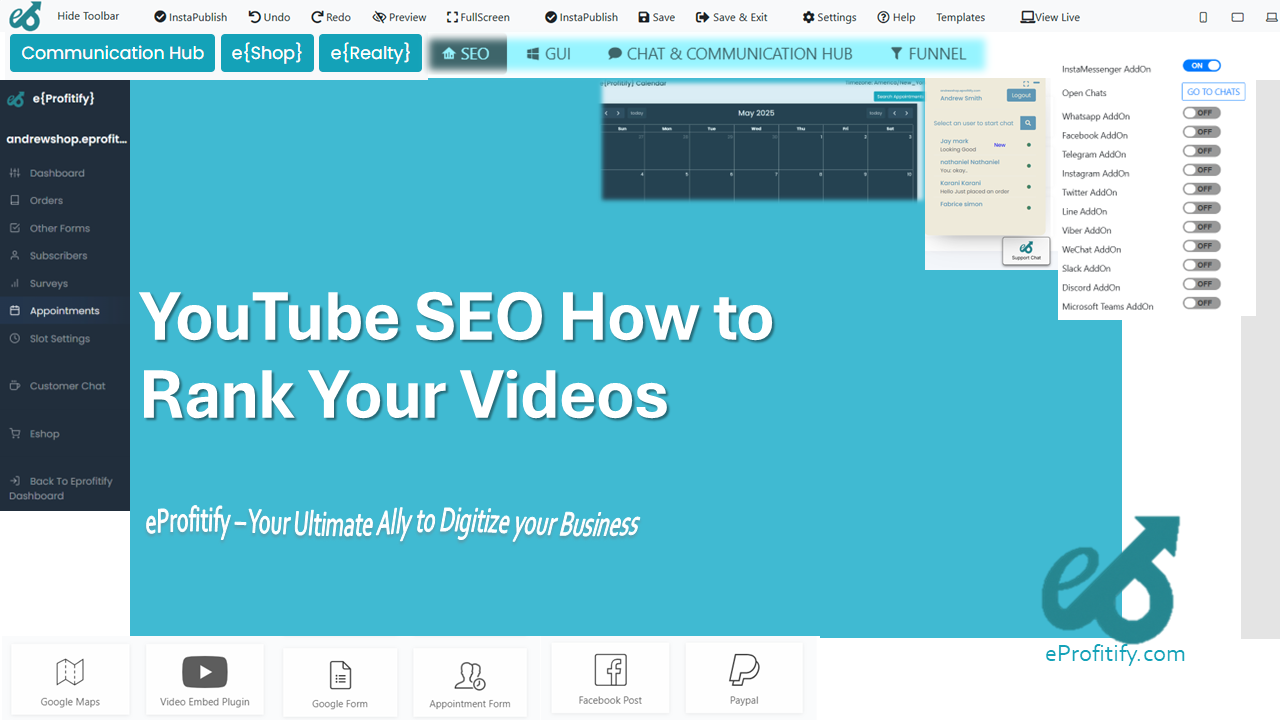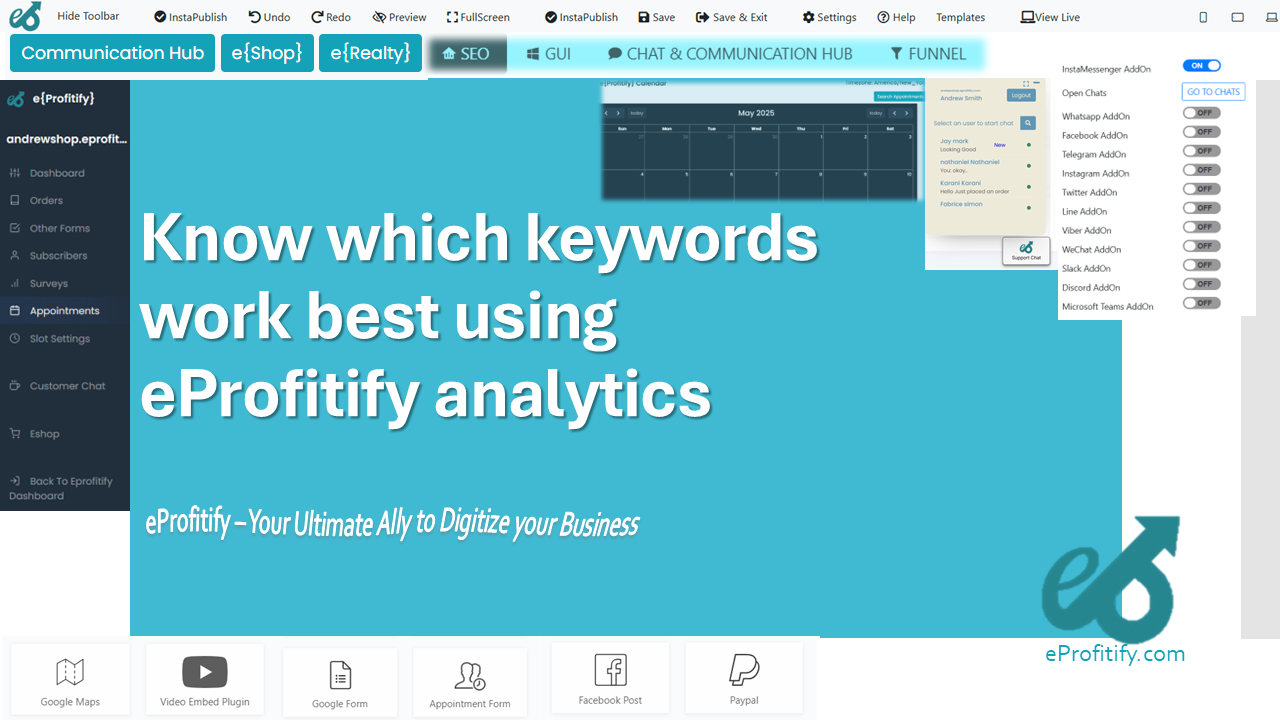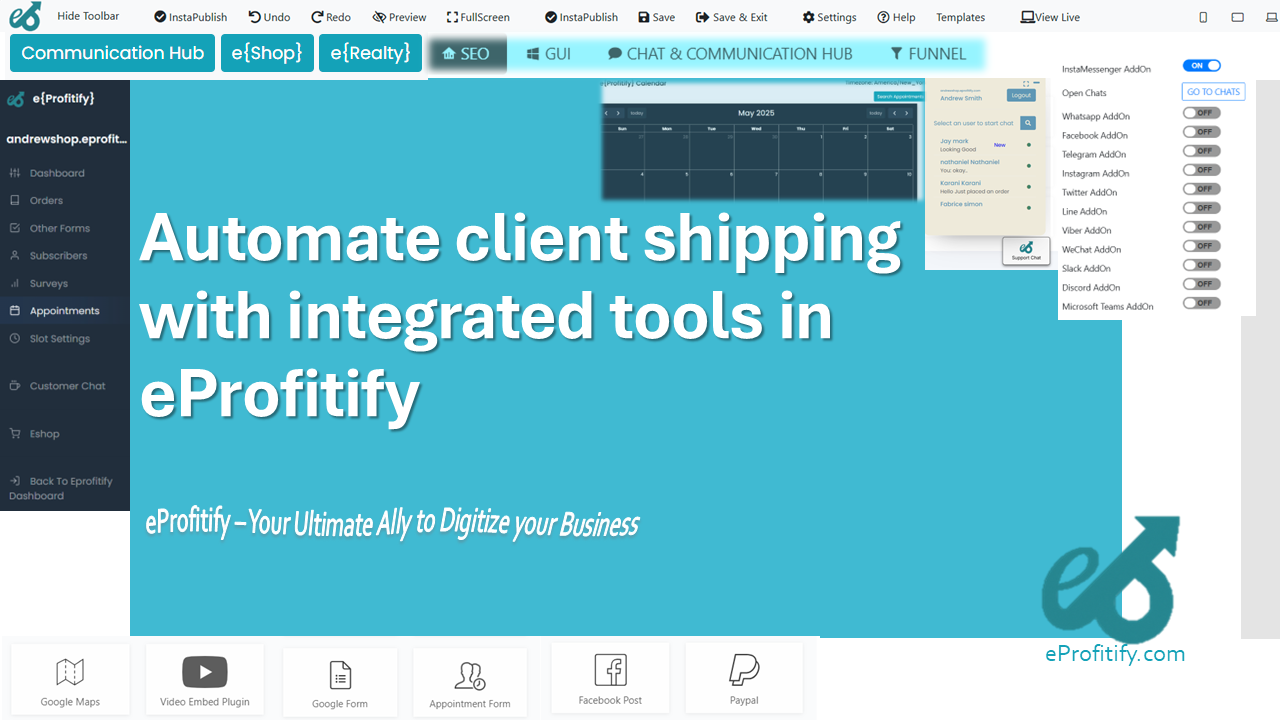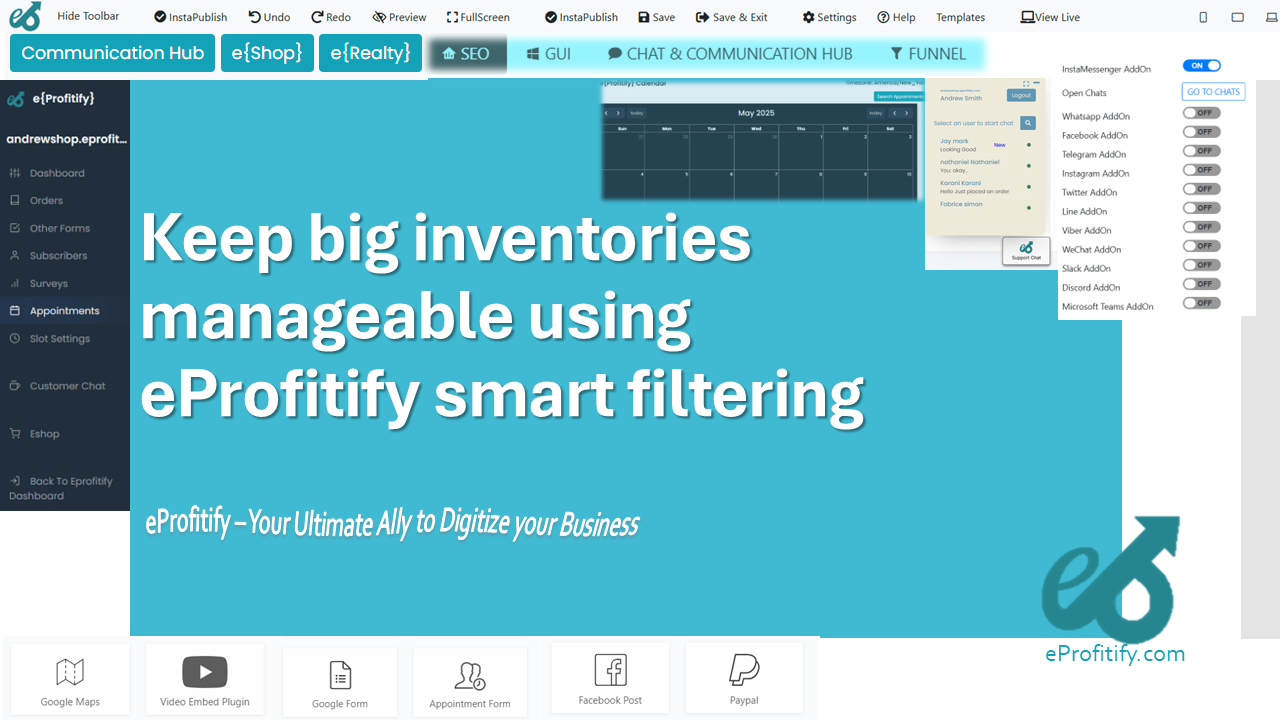YouTube SEO How to Rank Your Videos

Schedule a LIVE Zoom call with an eProfitify Expert.
YouTube SEO: How to Rank Your Videos
With over 2.7 billion monthly active users, YouTube is a powerhouse for content creators and businesses. However, standing out requires mastering YouTube SEO (Search Engine Optimization). Effective SEO practices ensure your videos appear in search results, recommended feeds, and gain organic traction. Below is a detailed guide to ranking your videos, backed by statistics, and insights into leveraging tools like eProfitify for holistic channel management.
1. Keyword Research: The Backbone of YouTube SEO
YouTube processes over 3.7 million searches per minute, making keyword research critical. Use tools like Google Keyword Planner, Ahrefs, or YouTube’s auto-suggest feature to identify high-volume, low-competition keywords. Focus on terms your audience is actively searching for. For example, “how to edit YouTube videos” or “best budget cameras 2024” are keyword phrases aligning with user intent.
Statistic: 40% of shoppers use YouTube to research purchases before buying (Google, 2019).
2. Optimize Video Titles
Titles heavily influence click-through rates (CTR). Keep them under 60 characters to avoid truncation, and place keywords at the beginning. For example, “10 SEO Hacks for Beginners | Boost Your YouTube Ranking” is concise and keyword-rich.
Statistic: Videos with titles containing primary keywords in the first 60 characters see a 13% higher CTR.
3. Craft Detailed Descriptions
YouTube descriptions allow up to 5,000 characters. Use the first 150 words to include keywords, links, and a clear summary. The algorithm scans this text to understand context. For instance, embedding keywords like “YouTube SEO tips” or “video ranking strategies” improves discoverability.
Statistic: Videos with descriptions over 250 words rank 20% higher in search results.
4. Leverage Tags and Categories
Tags help YouTube categorize your content. Include a mix of broad and specific tags, such as “video marketing” (broad) and “YouTube SEO tutorial” (specific). Add 10–15 tags per video for optimal results.
Statistic: Properly tagged videos receive 30% more views from Suggested Videos.
5. Create Engaging Thumbnails
Custom thumbnails boost CTR by signaling professionalism. Use high-contrast colors, readable text, and expressive imagery. For example, a thumbnail with a red arrow and “Top 5 Tools” text grabs attention.
Statistic: 90% of top-performing YouTube videos use custom thumbnails (HubSpot, 2023).
6. Focus on Watch Time and Audience Retention
YouTube prioritizes videos that keep viewers engaged. Aim for a watch time of over 50% and use hooks in the first 15 seconds to reduce drop-offs. Structure longer videos (8–15 minutes) with chapters to improve retention.
Statistic: YouTube states watch time is a “key metric” in its ranking algorithm, with top videos averaging 60%+ retention.
7. Encourage Engagement
Ask viewers to like, comment, and subscribe. Engagement signals (comments, shares) influence rankings. Responding to comments also builds community and algorithmic favor.
Statistic: Videos with 1,000+ comments get 4x more recommendations than those with fewer than 100.
8. Use Playlists and End Screens
Organize content into playlists to increase session duration. End screens promote other videos, keeping viewers on your channel longer. For example, add an end screen suggesting your latest upload.
Statistic: Channels using playlists generate 25% more watch time.
9. Publish Consistently
Consistency builds subscriber loyalty and algorithmic trust. Stick to a schedule—weekly or bi-weekly uploads—to maintain momentum.
Statistic: Channels uploading weekly grow subscribers 3x faster than irregular posters.
10. Promote Across Platforms
Share videos on social media, blogs, and email newsletters. Cross-promotion drives initial views, signaling popularity to YouTube’s algorithm.
Statistic: Videos shared on 3+ platforms see a 50% increase in organic traffic.
11. Analyze and Adapt with Analytics
Use YouTube Studio to track metrics like impressions, CTR, and traffic sources. Adjust strategies based on performance. For example, if CTR is low, test new thumbnails or titles.
Statistic: Channels analyzing analytics bi-weekly grow 80% faster than those that don’t.
12. Collaborate with Creators
Partner with influencers or creators in your niche for “collab videos.” This exposes your content to new audiences and boosts credibility.
Statistic: Collaboration videos gain 35% more subscribers on average.
13. Optimize for Mobile
Over 70% of YouTube watch time comes from mobile devices. Use large text in thumbnails, concise captions, and vertical shorts for mobile-first viewers.
Statistic: Mobile-optimized videos receive 2x more shares.
14. Utilize Closed Captions and Transcripts
Adding captions improves accessibility and SEO. YouTube auto-generates captions, but uploading edited SRT files ensures accuracy and keyword inclusion.
Statistic: Videos with captions see a 7% increase in watch time.
15. Update Old Content
Refresh outdated videos by updating titles, descriptions, or thumbnails. This can revive rankings without re-uploading.
Statistic: Updated videos gain a 210% traffic boost within 30 days.
Enhance Efficiency with eProfitify
While implementing SEO strategies, creators often juggle multiple tasks. This is where eProfitify, a leading website publishing and management tool, streamlines operations. Its features include:
- Instant messaging: Engage with your audience in real-time.
- Appointment management: Schedule content shoots or client meetings seamlessly.
- Ecommerce integration: Monetize videos by linking product pages or merch stores.
- CRM tools: Track viewer interactions and nurture leads.
- Analytics dashboard: Monitor YouTube performance alongside other platforms.
With eProfitify, creators consolidate workflows, ensuring more time is spent on content optimization and less on administrative tasks.
Conclusion
Ranking YouTube videos demands a blend of keyword research, engagement tactics, and analytics-driven adjustments. Staying updated on algorithm changes and leveraging tools like eProfitify for holistic management ensures creators maintain competitive edges. By focusing on SEO best practices—titles, descriptions, thumbnails, and watch time—and embracing scalable platforms, your content can thrive in YouTube’s dynamic ecosystem.
Key Statistics Recap:
- 3.7 million searches per minute on YouTube.
- 40% of shoppers use YouTube for product research.
- Custom thumbnails boost CTR by 90%.
- Weekly uploads increase subscriber growth by 3x.
- Collaboration videos generate 35% more subscribers.
- eProfitify users report 50% faster workflow efficiency.
By combining these strategies with robust tools, you’ll position your videos for long-term success.








